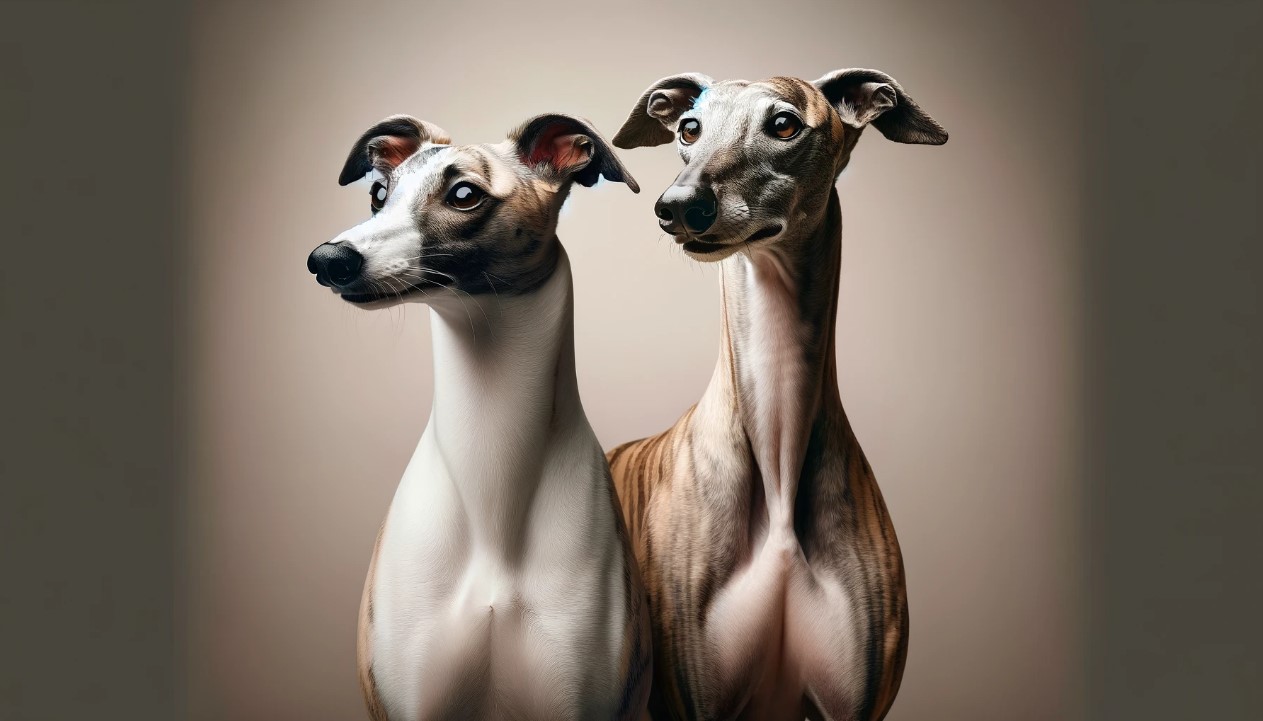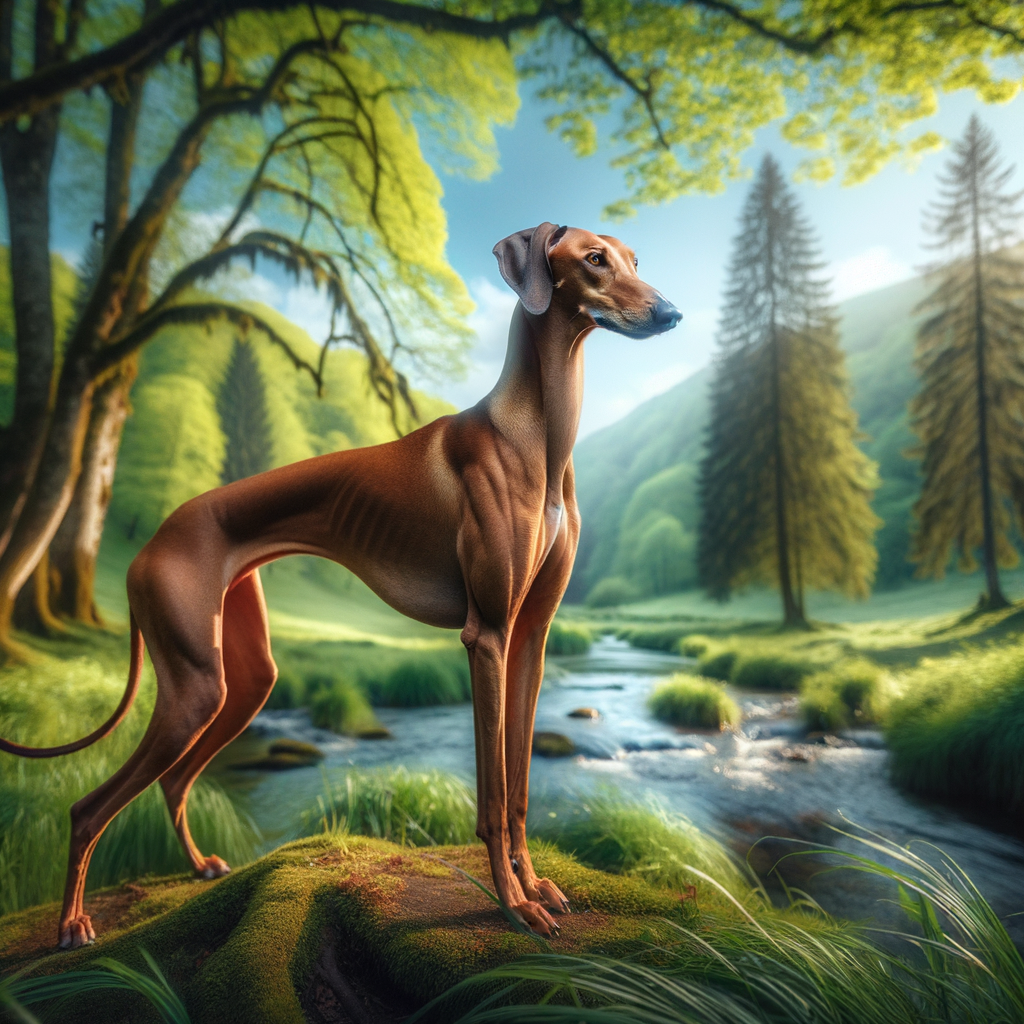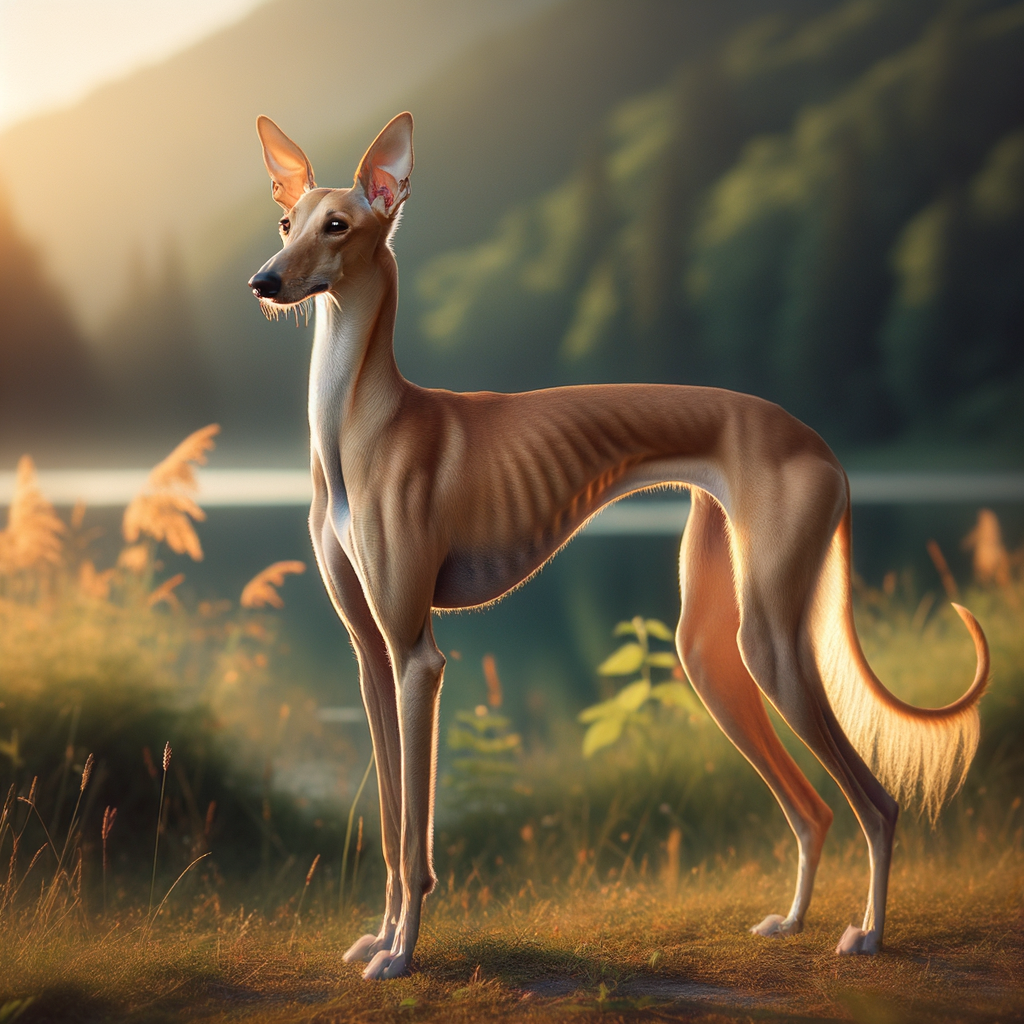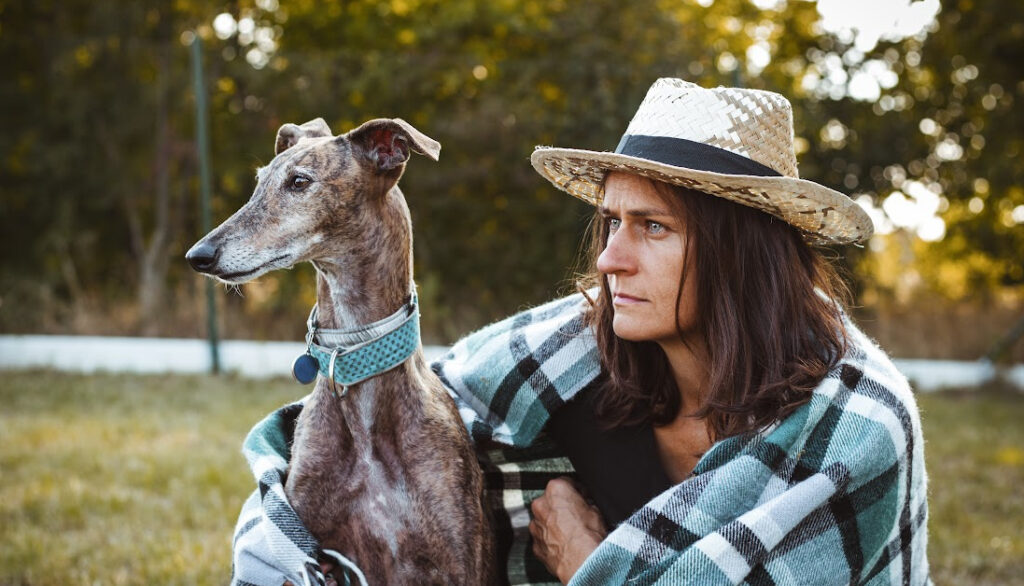Introduction to Long Skinny Dog Breeds
If you’ve ever gazed in awe at the sleek and slender form of a Greyhound or admired the elegant stature of a Whippet, you’ve experienced the appeal of long skinny dog breeds. These slim canine companions, with their graceful looks and agile movements, have a unique charm that’s hard to resist.

Understanding the Appeal of Slender Canine Companions
What makes these long skinny dog breeds so captivating? Is it their athletic build that hints at a life full of energy and action? Or perhaps it’s their refined elegance, reminiscent of a bygone era of aristocratic grandeur? In truth, it’s a mix of these factors – and more. These breeds often possess a gentle, friendly temperament that endears them to many dog lovers. Plus, their lean body structure is not just about aesthetics; it’s a testament to their adaptability and resilience, especially in active roles like hunting or racing.
Characteristics of Long and Skinny Dog Breeds
When it comes to the characteristics of these breeds, one aspect stands out – their body shape. They typically have narrow chests, long legs, and elongated bodies, which give them a distinctive look. But don’t let their slim appearance fool you – these dogs are strong and agile, built for speed and endurance. In fact, the Greyhound, one of the most well-known slender breeds, is renowned for its incredible speed. So if you’re considering adopting one of these breeds, be prepared for a pet that’s full of energy, requiring regular exercise and a nutritious diet to keep their lean bodies in top shape.
In the sections to follow, we’ll delve further into the fascinating world of long skinny dog breeds, exploring their history, health needs, popular breeds, grooming and care tips, training, adoption considerations, and their future. So, whether you’re a prospective pet parent or just a curious dog lover, stick around for a detailed guide to these remarkable canine companions.
History and Evolution of Long Skinny Dog Breeds
Origins of Slender Canine Breeds
Envision yourself journeying back to an ancient era where the relationship between human and canine was just beginning to evolve. The first long skinny dog breeds were not bred for their sleek appearance but for practical reasons. These breeds often come from the sighthound group, which includes breeds known for their speed, agility, and distinctive visual acuity.
The earliest depiction of such breeds can be traced back to the Egyptian tombs and Greek frescoes, dating back as far as 4000 BC. The Saluki, one of the oldest known breeds, noted for its slender body and long legs, was even considered sacred by ancient Egyptians. These dogs were bred for hunting due to their exceptional speed and sight, ideal for tracking and catching prey in expansive desert landscapes.
How Breeding Has Shaped the Modern Skinny Dog
Breeding practices over the centuries have honed the traits and characteristics of these long skinny dog breeds. Let’s embark on a fascinating journey exploring how the original slender canines have evolved into the modern-day long skinny dog breeds we see today.
The Greyhound, a prime example of selective breeding, is one of the most recognized long skinny dog breeds. The breed’s history traces back over 4000 years to ancient Egypt. Greyhounds were bred for their speed to help in hunting and later for the sport of coursing, where dogs chase game solely by sight rather than scent.
Fast forward to the Middle Ages in Europe, and Greyhounds soon became the dog of nobility. Their long, slender bodies and keen eyesight made them excellent hunters, while their gentle demeanor made them great companions.
The Whippet, another beloved long skinny breed, was created in the 18th century in England. They were initially bred by coal miners who, unable to afford the larger Greyhounds, bred these “miniature greyhounds” for racing and rabbit hunting. Today, Whippets maintain their slender physique, speed, and affectionate nature, making them popular among dog lovers.
Selective breeding over generations has not only retained the unique physical characteristics of these long skinny dog breeds but also accentuated them. Today, these breeds are cherished for their elegance, grace, and swiftness as well as for their unique appearance.

The Importance of Health and Nutrition for Skinny Dog Breeds
Health and nutrition are paramount for every dog breed, but for long and skinny dog breeds, they are of peculiar importance. These breeds have unique dietary and exercise needs that need to be understood and met to ensure they lead healthy and active lives.
Special Dietary Considerations for Slender Dogs
Feeding your long, skinny dog breed isn’t as straightforward as picking any random dog food bag off the shelf. Due to their lean body build and high metabolism, these dogs need a carefully balanced diet to maintain their health. They often require a diet rich in protein for muscle development, carbohydrates for energy, and a moderate amount of fat to retain their lean figure.
Furthermore, slender dog breeds like greyhounds or whippets are known for their sensitive stomachs. This means their diet should be low in fillers like corn and wheat and rich in easily digestible ingredients such as fish, chicken, or lamb. You might also need to feed them smaller meals more frequently throughout the day to avoid bloating or gastric torsion.
Always remember to consult with your veterinarian or a canine nutritionist to establish a suitable feeding regime for your slender dog breed. They can take into account your dog’s age, activity level, and any existing health conditions to help you make the best choices.
Exercise Needs of Long and Skinny Canine Breeds
One of the defining characteristics of long skinny dog breeds is their high energy levels. These dogs were originally bred for jobs that required speed and agility, from hunting to racing. As such, their exercise needs are usually higher than those of other breeds.
Daily physical exercise such as walks, runs, or games of fetch are essential to keep these dogs healthy and happy. Additionally, mental stimulation is equally important to keep their sharp minds occupied. Puzzle toys, agility training, or even simple obedience training can work wonders in keeping your dog mentally engaged.
However, the intensity and duration of exercise depend on the specific breed and individual dog’s health and age. For instance, while young whippets might enjoy long runs in the park, older greyhounds might be content with a leisurely walk around the neighborhood.
One important thing to remember is that these breeds, due to their thin coats and low body fat, can be particularly sensitive to extreme temperatures. Therefore, ensure you adjust their exercise routines accordingly during very hot or cold days.
Lastly, while long skinny dog breeds require a good deal of exercise, proper rest is just as essential. These breeds are known to be great couch potatoes and would appreciate a comfy, warm spot to snooze in after a day of activity.
In the end, with the right balance of nutritious food and appropriate exercise, your slender canine companion will not only stay physically fit but also happy and mentally stimulated. IV. Popular Long Skinny Dog Breeds: A Listicle
Here are two of the most popular long skinny dog breeds, known for their elegance, speed, and distinctive physique.
Greyhound: The Classic Racing Breed
The Greyhound is perhaps the most renowned when it comes to long skinny dog breeds. Originating from Egypt, these dogs were bred for hunting due to their fantastic speed and agility.
– Physique: They are characterized by their aerodynamic, slim, and sleek bodies, standing around 27-30 inches tall.
– Coat: Greyhounds have a short, fine coat that comes in a variety of patterns and colors.
– Temperament: Despite their racing legacy, Greyhounds are surprisingly laid-back, gentle, and can make great family pets. They are known for their sweet and affectionate nature.
Whippet: The Gentleman’s Racing Dog
Often referred to as a “miniature Greyhound,” the Whippet is another prime example of long skinny dog breeds. They were originally bred in England for hunting and racing just like their Greyhound cousins.
– Physique: Whippets are smaller than Greyhounds, usually standing around 18-22 inches tall. They share the same slim and sleek build.
– Coat: Their coats are short and smooth, and they also can be found in various patterns and colors.
– Temperament: Whippets are known for their affectionate and playful nature. They are also very intelligent and easy to train.
Both these breeds require a balanced diet and regular exercise to maintain their health and lean physique. Special care should be taken of their short coats and they should be regularly checked for any health issues common to their breed.
Remember, every dog deserves a home filled with love and care. Whether you opt for a long skinny dog breed or any other dog, the most important thing is to offer them a happy and healthy environment.

Grooming and Care for Long Skinny Dog Breeds
When it comes to caring for your long skinny dog breed, there are quite a few things to keep in mind. These slender canines often require a different approach to grooming and healthcare compared to their bulkier counterparts. Let’s dive into some key tips and tricks to keep your slim pup looking and feeling their best.
Grooming Tips for Maintaining a Healthy Coat
One of the most noticeable features of long skinny dog breeds, such as the Greyhound or Whippet, is their sleek, short coat. Here are some grooming tips to help maintain a healthy coat:
- Regular Brushing: Despite their short hair, long skinny dogs still benefit from regular brushing. This helps to remove loose hair, distribute natural oils, and keep their skin healthy.
- Bathing: These breeds don’t require frequent baths, but when you do bathe them, use a gentle shampoo to avoid drying out their skin.
- Inspection: Regularly inspect your dog’s skin and coat for any signs of parasites, rashes, or other skin issues. Their thin coat makes it easier to spot any potential problems early.
Health Monitoring and Care for Slender Canines
Long skinny dog breeds have unique health considerations due to their slender build. Here are some tips for monitoring and caring for their health:
- Weight Management: Due to their lean build, it’s crucial to monitor your dog’s weight closely. Being underweight can lead to health issues, but so can being overweight, as it puts extra strain on their long, slender frame.
- Joint Care: Long skinny dogs are often more prone to joint issues due to their elongated limbs. Regular, low-impact exercise and a diet rich in joint-supporting nutrients can help maintain joint health.
- Temperature Regulation: These breeds often have less body fat to insulate them, making them more susceptible to cold weather. Ensure they have a warm place to rest and consider a doggy sweater for chilly walks.
- Regular Vet Check-ups: Regular vet visits are essential for all dogs, but especially for long skinny breeds. This allows for early detection and treatment of any potential health issues.
Remember, every dog is unique, and what works for one might not work for another. Always consult with your vet about the best care practices for your particular breed and individual dog. With proper grooming and care, your long skinny dog can lead a healthy, happy life.
Training and Socializing Long Skinny Dog Breeds
Training and socializing your long, skinny dog breed should be an engaging and enjoyable experience for both you and your furry companion. These breeds are typically active, agile and fast learners, making them a joy to train, but all have their unique quirks and characteristics. Let’s explore some of the techniques and strategies you can employ.
Training Techniques for Sighthounds and Similar Breeds
Most long, slim breeds like Greyhounds, Whippets, and Salukis fall into the sighthound category. These dogs, known for their keen sense of sight and slender physique, are instinctively driven to chase moving objects. This instinct makes sighthound training a bit different from other breeds.
- Positive reinforcement: Sighthounds respond well to positive reinforcement techniques. Reward them with their favorite treats, praise, or a toy when they follow a command correctly. This approach encourages them to repeat the positive behavior.
- Consistency: Consistent command usage and gestures are key. Changing your command words or physical cues can confuse the dog, leading to inconsistent responses.
- Patience: Remember, every dog learns at their own pace. Don’t rush the process, and always celebrate small victories.
While these tips are tailored to sighthounds, they can also be applied to other long, skinny breeds. It’s crucial to remember that every dog has a unique personality and may require different training tactics.
Socialization Strategies for Long and Skinny Dogs
Socializing your slender canine companion is equally important as training. Socialization exposes your dog to different environments, people, and other animals, helping them to become well-adjusted and confident.
- Early exposure: Start socializing your dog at a young age, if possible. This early exposure helps them to adapt to different situations as they grow.
- Gradual introduction: Introduce new experiences and environments gradually. Sudden or overwhelming changes can stress your dog. Start with short, controlled encounters and gradually increase the time and complexity.
- Positive associations: Associate new experiences with positive outcomes. If your pet is meeting new people or other dogs, reward them with treats or praise to create a positive association.
- Watch the body language: Always be attentive to your dog’s body language. If they appear scared or uncomfortable, give them space and reintroduce the situation at a later time more slowly.
Remember, training and socializing your long, skinny dog breed isn’t just about obedience. It’s about building a bond, trust, and understanding with your canine companion. So, take your time, be patient, and most importantly, enjoy the journey!

Adoption and Rescue of Long Skinny Dog Breeds
As a potential dog parent, the decision to adopt a pet is one of the most rewarding choices you can make. It’s even more fulfilling when you’re considering the adoption of long skinny dog breeds. These slender beauties, with their unique physical traits and personalities, deserve loving homes as much as any other breed. Let’s discuss where you can find these specific breed rescues and the considerations you should take into account before adopting a slender canine companion.
Where to Find Skinny Dog Breed Rescues
Finding a rescue that specializes in long skinny dog breeds can be a bit of a challenge. However, there are several organizations that can help you on your quest. To simplify your search, here are few places to consider:
- The American Sighthound Rescue Association: This national organization focuses primarily on rescuing, rehabilitating, and rehoming breeds like Greyhounds, Whippets, and Italian Greyhounds.
- National Greyhound Adoption Program: This organization aims to place retired racing Greyhounds into loving homes. They also provide a wealth of knowledge on the care and maintenance of this unique breed.
- Regional Breed Specific Rescues: There are numerous regional rescues dedicated to specific long skinny dog breeds. A quick search online with the breed’s name and the word “rescue” should provide you with a list of organizations close to your location.
Remember, adoption isn’t a race, but a journey. It’s about finding the perfect dog breed that matches your lifestyle and will be a happy and healthy addition to your family. It’s essential to be patient during this process.
Considerations Before Adopting a Slender Canine Companion
Before you adopt a long skinny dog breed, there are several considerations to keep in mind. These breeds often have specific needs that differ from other dogs:
- Exercise Needs: Long skinny dog breeds like Greyhounds and Whippets are naturally athletic and require daily exercise to keep them healthy and content. Make sure you’re ready for this commitment.
- Dietary Requirements: These breeds have a high metabolism, so they require a balanced and nutritious diet. Some may require more than the average amount of food depending on their level of activity.
- Health Considerations: Slender dog breeds can be more susceptible to conditions like hypothermia due to their low body fat. They may also be prone to specific breed-related health issues, so it’s essential to conduct thorough research or consult with a vet.
- Living Conditions: These breeds are known for their speed, but they’re also quite content being couch potatoes. They are sensitive to cold weather due to their thin coats and low body fat, so they are better suited to living indoors.
Adopting a long skinny dog breed is a wonderful and gratifying experience, but it’s important to note that every dog is an individual. As a potential pet parent, your responsibility is to provide a loving and safe environment that caters to your pet’s unique needs, ensuring they live a happy, healthy life.
The Future of Long Skinny Dog Breeds
I bet you’ve been enjoying our journey through the world of long skinny dog breeds. We’ve covered a lot of ground, from the unique characteristics of these slender canines, their fascinating history and evolution, their specific health and nutrition needs, popular breeds, grooming needs, training and socialization, and considerations for adoption. Now, let’s look ahead and explore the future of these remarkable dog breeds.
Breeding Trends and the Preservation of Skinny Dog Breeds
Preservation and ethical breeding are key aspects of ensuring the future of long, skinny dog breeds. Due to their distinct physique and unique abilities, these breeds have become a favorite amongst enthusiasts and breeders alike.
However, it’s important that breeders prioritize the health and genetic diversity of these breeds. Inbreeding can cause serious health problems, and reducing this risk is a pivotal part of preserving these unique dogs for future generations. Breeders also need to be aware of the health issues that longer, thinner dogs are prone to, such as skeletal and cardiovascular issues.
Humane breeding practices are crucial. This includes adequate veterinary care, proper nutrition, plenty of exercise, and of course, lots of love and social interaction. By ensuring these practices, we can look forward to a future where long, skinny dog breeds continue to thrive.
The Growing Popularity of Slender Canine Companions in Modern Society
Did you know that there’s a growing trend for adopting long, skinny dog breeds? These slender canines have been steadily increasing in popularity, and there’s a reason why.
Not only are these dogs aesthetically pleasing, but they also have unique personalities that make them wonderful companions. Many of these breeds, such as the Greyhound and Whippet, are known for their gentle demeanor and affectionate nature. Despite their athletic prowess, they’re often described as “couch potatoes” who enjoy lounging around as much as they enjoy a good sprint.
Furthermore, society is becoming more aware of the plight of racing breeds, and many are opening their hearts and homes to these dogs once their racing careers are over. This trend is likely to continue as more people learn about these amazing breeds and their need for loving homes.
Thanks to ethical breeders, dedicated rescue organizations, and caring dog parents like you, the future of long, skinny dog breeds looks promising. Together, we can ensure that these unique breeds continue to flourish and bring joy to families for generations to come.
Remember, being a dog parent is a lifelong commitment, but the love and companionship you get in return are absolutely priceless. Whether you have a long, skinny dog breed or any other type of dog, providing them with a loving home, good nutrition, and proper care is the best way to ensure their happiness and health. Here’s to a future filled with wagging tails, joyful barks, and lots of canine cuddles!
Frequently Asked Questions
Q1: What are some examples of long skinny dog breeds?
A: Some examples of long skinny dog breeds include the Greyhound, Whippet, Italian Greyhound, Dachshund, and Saluki.
Q2: What are the typical characteristics of long skinny dog breeds?
A: Long skinny dog breeds typically have a slender, elongated body with a narrow chest and abdomen. They are often fast runners and have a high energy level.
Q3: Are long skinny dog breeds suitable for apartment living?
A: It depends on the specific breed and the dog’s individual personality. Some long skinny dog breeds like the Italian Greyhound are known to adapt well to apartment living, while others like the Greyhound may require more space and exercise.
Q4: What kind of care do long skinny dog breeds require?
A: Long skinny dog breeds generally require regular exercise to keep them healthy and happy. They may also require special attention to their diet to ensure they maintain a healthy weight. Regular vet check-ups are also important to monitor their health.
Q5: Are long skinny dog breeds good with children?
A: Many long skinny dog breeds are known to be good with children, but it always depends on the individual dog’s temperament and how they are socialized. It’s always important to supervise interactions between dogs and young children to ensure safety for both.
Dr. Candy, a holistic veterinarian and certified raw dog food nutrition specialist, graduated from Oklahoma State University in 2009 with a DVM and has since specialized in companion animal nutrition, advocating for species-specific diets. With a background in wildlife rehabilitation and oil spill response, she combines holistic health and conventional medicine in her unique approach to treating chronic diseases, allergies, and autoimmune conditions in pets. As the owner of a veterinary practice in Colorado and an author, Dr. Candy is dedicated to educating pet parents and improving the health and happiness of animals.




